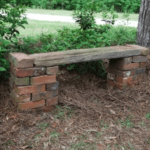Dog park landscaping ideas are essential for creating a safe, enjoyable, and functional space for dogs to play and socialize. In this article, we will explore the significance of landscaping in dog parks and provide practical tips for designing a canine-friendly environment that meets the needs of both pets and their owners.
When it comes to designing a dog park, safety should be the top priority. From secure enclosures to dog-friendly ground cover, there are several key factors to consider in order to ensure a secure environment for dogs to play without any risks. We’ll discuss the importance of fencing, enclosures, and choosing the best surface for play to prevent injuries and accidents.
In addition to safety considerations, creating shaded areas, incorporating water features, agility equipment, and managing waste are important aspects of dog park landscaping. These elements not only contribute to the overall enjoyment of the park but also promote physical activity, social interaction, and hygiene. Let’s explore each of these components in more detail.
Safety First
When designing a dog park, safety should be the top priority to ensure that dogs can play and socialize in a secure environment. Here are some key considerations for creating a safe space for our furry friends:
- Proper Fencing: Installing sturdy and high-quality fencing is essential to prevent dogs from escaping the park and entering potentially dangerous areas. A secure fence also provides a sense of containment for dogs, allowing them to roam freely without the risk of running off.
- Double-Gated Entry: Implementing a double-gated entry system is an effective way to prevent dogs from bolting out of the park when other dogs enter or exit. This design also helps to minimize the risk of dogs escaping during busy times when there may be more foot traffic.
- Clear Signage: Clearly posted rules and guidelines, as well as information about any hazards within the park, can help owners understand how to keep their pets safe while visiting. Signage can also provide valuable information on local laws and regulations regarding dog parks.
Moreover, it is crucial to involve professional landscapers in your dog park landscaping ideas project. They can help create a safe yet aesthetically pleasing environment for both dogs and their owners. By planting durable yet attractive greenery, adding durable but comfortable ground coverings, and incorporating natural barriers between different sections of the park, professional landscapers can ensure that both safety and beauty are prioritized in equal measure.
Fencing and Enclosures
When it comes to designing a dog park, safety should be the top priority. One of the key elements in ensuring a secure environment for dogs to play is the installation of proper fencing and enclosures. Here are some important considerations when it comes to fencing and enclosures for dog parks:
- Height: The fence should be tall enough to prevent dogs from jumping over it, but not so tall that it obstructs the view of owners or supervisors. A height of 5 to 6 feet is typically recommended.
- Material: The material used for the fence should be durable and able to withstand the wear and tear from playful dogs. Chain-link fences are popular due to their strength and visibility, but there are also other options such as PVC or wood.
- Gates: It’s important to have secure gates that can be easily opened by humans but not by dogs. Double-gated entry systems are often used in dog parks to prevent dogs from escaping during entry and exit.
In addition to providing a safe and secure environment, well-designed fencing and enclosures can also enhance the overall aesthetic appeal of the dog park. By carefully considering these elements, dog park landscaping ideas can contribute not only to the safety of the facility but also to its visual appeal.
Dog-Friendly Ground Cover
Introducing the right ground cover within a dog park is crucial for the safety and enjoyment of both dogs and their owners. The ideal ground cover should provide a comfortable and safe surface for play while also being easy to maintain. When considering dog park landscaping ideas, it’s essential to choose a ground cover that is durable, low-maintenance, and non-toxic for dogs.
One popular option for dog park ground cover is artificial turf. This synthetic grass alternative provides a soft and cushioned surface for dogs to run and play on. Additionally, artificial turf is easy to clean and can withstand heavy foot traffic, making it an ideal choice for dog parks. Another benefit of artificial turf is its resistance to digging, which helps maintain the park’s integrity.
Another suitable ground cover option for dog parks is natural mulch or wood chips. Not only does this material provide a soft surface for dogs to walk on, but it also acts as a natural weed deterrent. However, it’s important to regularly inspect and replenish the mulch to ensure it stays at an adequate depth and remains free of harmful substances like pesticides.
Lastly, gravel can also be used as ground cover in dog parks. Gravel provides excellent drainage, which can help prevent muddy areas from forming in the park during rainy weather. It also offers good traction for running dogs and is relatively low maintenance. However, it’s crucial to select smooth-edged gravel to prevent injuries to dogs’ paws.
| Ground Cover Option | Benefits |
|---|---|
| Artificial Turf | Soft surface, easy maintenance |
| Natural Mulch/Wood Chips | Weed deterrent, soft surface |
| Gravel | Good drainage, low maintenance |
Shaded Areas
Creating shaded areas within a dog park is essential for providing relief from the sun for both dogs and their owners. Not only does shade help to keep dogs cool and comfortable, but it also ensures that pet owners can enjoy spending time at the park without being exposed to excessive sunlight.
Strategic Placement of Shade Structures
When planning the landscaping of a dog park, it’s important to strategically place shade structures in areas where they will be most effective. Consider positioning shade sails, pavilions, or trees near benches and seating areas for pet owners, as well as throughout the open play areas for dogs.
Natural Shade Options
In addition to man-made shade structures, incorporating natural shade options into the landscaping of the dog park can also be beneficial. Planting trees with expansive canopies can provide ample shade for both dogs and their owners, creating a more pleasant experience for everyone visiting the park.
Portable Shade Solutions
For added flexibility, consider adding portable umbrellas or pop-up canopy tents in certain areas of the dog park. These can be moved around as needed to cover specific spots throughout the day, providing relief from the sun wherever it may be most needed.
By including well-planned shaded areas in the landscaping design of a dog park, it creates a more comfortable and enjoyable environment for both dogs and their human companions. Providing relief from the sun encourages longer stays at the park while protecting visitors from potential heat-related issues.
Water Features
Water is an essential element for any dog park, especially in hot climates or during the summer months. Providing drinking fountains and splash pads for dogs can help keep them hydrated and cool while they enjoy their playtime.
Drinking Fountains
When incorporating water features into a dog park, it is important to install drinking fountains specifically designed for dogs. These fountains should be at a height that is easily accessible to dogs of all sizes and breeds. Additionally, the water pressure should be adjusted to provide a gentle flow that is not intimidating to the animals.
Splash Pads
Splash pads are a great way to provide entertainment and relief from the heat for furry visitors. These can include shallow pools or misters that dogs can run through or lay in. When designing splash pads, it’s important to choose non-slip surfaces to prevent accidents and injuries. It’s also crucial to use pet-friendly cleaning products to maintain hygiene.
In addition to providing fun and comfort, these water features contribute to the overall aesthetic appeal of the park, creating an inviting environment for both dogs and their owners. When considering dog park landscaping ideas, it’s important to prioritize these water features as they play a significant role in promoting the health and well-being of our furry companions while enhancing their overall experience at the park.
Agility Equipment
Agility equipment is an essential component of a dog park’s landscaping. It not only adds fun and excitement for dogs but also provides them with the exercise they need to stay healthy and active. When designing your dog park, it’s important to consider the various types of agility equipment that can be incorporated to create an engaging environment for dogs of all sizes and breeds.
One popular addition to any dog park is the agility course, which typically includes obstacles such as tunnels, ramps, hurdles, weave poles, and platforms. These obstacles not only provide physical exercise for dogs but also mental stimulation as they navigate through the course. Moreover, agility courses encourage socialization among dogs and their owners, making the park a hub for a vibrant canine community.
In addition to agility courses, dog parks can also include other types of equipment such as balance beams, jumping hoops, and crawl tunnels. These features are designed to challenge dogs’ coordination and balance while providing them with a sense of achievement as they master each obstacle. It’s important to choose well-made and durable equipment that can withstand constant use by playful pups of all energy levels.
| Agility Equipment | Benefits |
|---|---|
| Agility Courses | Provides physical and mental stimulation; encourages socialization among dogs and owners |
| Balance Beams, Jumping Hoops, Crawl Tunnels | Challenges coordination and balance; promotes a sense of achievement for dogs |
Waste Management
When designing a dog park, waste management is a crucial aspect to consider in order to keep the park clean and hygienic for both dogs and their owners. Dog waste can pose health risks to humans and other animals if not properly managed, making it essential to have a comprehensive waste management system in place.
One of the key elements of waste management in a dog park is providing ample waste disposal stations throughout the park. This includes strategically placing poop bag dispensers and trash bins in easily accessible areas so that dog owners can quickly and conveniently clean up after their pets. Regular maintenance and emptying of these receptacles are also necessary to ensure that they do not overflow or become unsanitary.
In addition to providing waste disposal stations, it is important for dog parks to have clear signage and guidelines regarding waste cleanup. Informative signs can remind owners of their responsibility to pick up after their dogs, as well as provide instructions on the proper disposal of pet waste. By educating visitors about the importance of keeping the park clean, it fosters a sense of community responsibility for maintaining the hygiene of the space.
Furthermore, some innovative dog park landscaping ideas for waste management include incorporating designated “potty areas” with specialized turf or ground cover that makes it easier to clean up and maintain. These designated areas help concentrate pet waste in one location, making it simpler for maintenance staff to keep the rest of the park clean.
Additionally, implementing pet waste composting systems can be an eco-friendly solution for managing dog waste while simultaneously enriching the soil within the park’s landscaping. Overall, effective waste management practices are essential for creating a pleasant and sanitary environment at any dog park.
Community Involvement
When it comes to creating the perfect dog park, input from the community is essential. Who better to provide valuable insight and ideas than the people who will be using the park with their furry companions? Engaging with dog owners and local residents can help ensure that the park meets the needs of both dogs and their owners, making it a truly successful and beloved community space.
One way to involve the community in the design process is through surveys and public meetings. By gathering feedback on what features dog owners would like to see in the park, such as agility equipment, shaded areas, or specific landscaping elements, planners can create a park that reflects the desires of those who will use it most frequently.
It’s important to take into consideration not just what owners want for themselves, but also what they feel would benefit their dogs in terms of safety, playability, and overall enjoyment.
Additionally, creating a volunteer group or advisory committee comprised of local residents and dog owners can provide ongoing support for the maintenance and improvement of the dog park. This group can organize fundraising events, coordinate clean-up days, and serve as advocates for any necessary changes or improvements to the park over time.
By fostering a sense of ownership and pride in the community, residents will be more likely to take an active role in maintaining a safe and enjoyable space for everyone’s canine companions.
Incorporating input from dog owners throughout every stage of planning and development ensures that the resulting park will not only meet but exceed expectations as a cherished community resource for years to come. Engaging with dog owners helps ensure that all aspects of landscaping are considered including water features as well as waste management solutions.
Conclusion
Designing the perfect dog park requires careful consideration and planning to ensure a safe and enjoyable environment for our canine companions. Safety is paramount, so creating secure enclosures with durable fencing is essential. Additionally, choosing the right ground cover that is both dog-friendly and easy to maintain is crucial for their play and exercise. Incorporating shaded areas, water features, agility equipment, and waste management solutions are all vital components of a well-designed dog park.
When it comes to dog park landscaping ideas, community involvement plays a significant role in understanding the needs and preferences of local dog owners. By getting input from the community, park designers can create a space that truly meets the needs of both dogs and their owners. Whether it’s providing feedback on potential agility equipment or suggesting additional amenities like splash pads, involving the community ensures that the park becomes a beloved spot within the neighborhood.
In conclusion, creating an ideal dog park goes beyond just installing fences and providing a water source. It involves carefully considering every aspect of the park’s design – from safety measures to environmental elements – to ensure that dogs have a safe and enjoyable place to play and socialize. By incorporating these landscape ideas and taking input from local dog owners, we can create a happy and healthy canine community within our parks.
Frequently Asked Questions
What Is the Best Surface for a Dog Park?
The best surface for a dog park is one that is safe, durable, and easy to maintain. Many dog parks use a combination of natural grass and artificial turf to provide a soft surface for dogs to run and play on without the risk of holes or mud. Some also incorporate gravel or sand areas for digging and playing.
What Is the Best Design for a Dog Park?
The best design for a dog park includes separate areas for small and large dogs, shade structures, water stations, waste disposal bins, and agility equipment. It’s important to have secure fencing to prevent dogs from escaping and sufficient lighting for evening visits.
A well-designed layout allows for easy supervision by owners and provides ample space for dogs to roam freely.
What Landscape Is Best for Dogs?
The best landscape for dogs includes a mix of open grassy areas, shaded spots, trees, and bushes. Dogs enjoy having spaces to explore with varied terrain like hills or gentle slopes.
It’s also beneficial to include designated play areas with obstacles like tunnels or ramps. A thoughtfully landscaped dog park provides opportunities for mental stimulation as well as physical exercise.

Welcome to my gardening blog! I am passionate about plants and enjoy sharing my knowledge and experiences with others. In this blog, I will write about everything related to gardening, from tips on how to get started to updates on my own garden projects.





